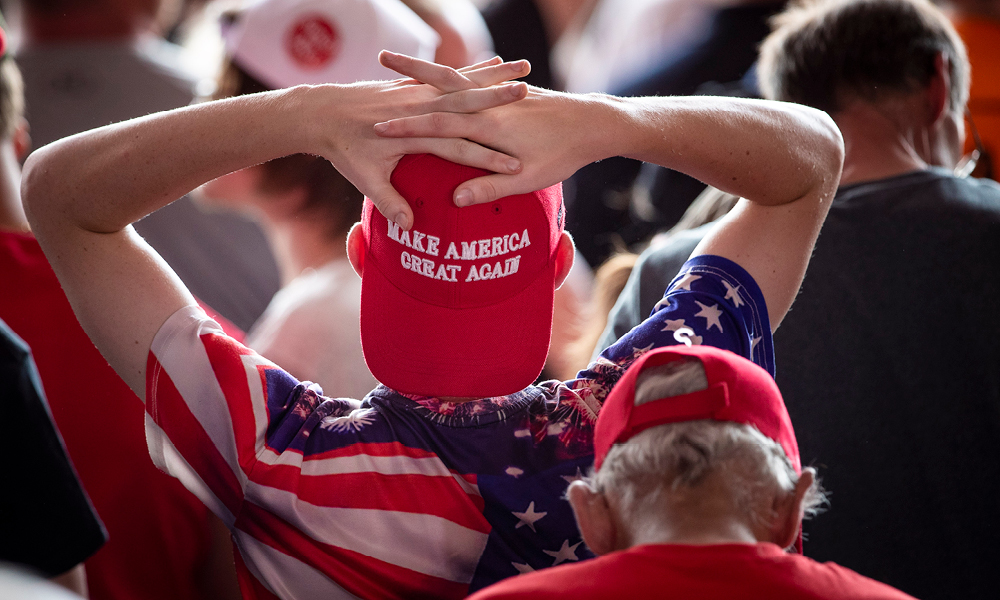We live in interesting times.
The recent hurly-burly in the United States’ Presidential election has held a mirror up to an apparently deeply divided and partisan nation, where fact and fiction are seemingly blurring into one.
Fuelled by immediate and ready access to information, both factual and fictional, through social media our news reporting shows images of confusion, anger, fear and an ever-growing distrust in American institutions. Once sacrosanct, the Constitution and its institutions are being questioned as frauds and partisan tools.
Tennessee Williams once wrote a play about a streetcar named Desire that trundled continually and inevitably down the road of doom and misfortune. The similarity with current times in the United States is a little frightening.
But why is this in any way important to an Antipodean nation thousands of kilometres away?
Australia has always had a special relationship with the United States that goes much deeper and further back than the Battle of the Coral Sea, AUSTFA, the Five Eyes or even the much-celebrated early work of Vanilla Ice.
For Australians, perhaps an at unconscious level, the connection is much more visceral as the United States is the model for almost everything that matters in the Australian Constitution and, when US Constitutional institutions fail, we can’t help but look at our own system and ask if that is our future too?
Contrary to popular belief, the real father of the Australian Constitution was Tasmanian Attorney-General Andrew Ingles Clark – a visitor of the United States, a scholar of their Constitution and equipped with republican sympathies that made him less favourable to historians of the time than Griffith with loyalties to the Empire.
Clark commenced the Australian Constitutional Conventions with a memo and draft Bill sent to delegates prior to debates to get the ball rolling on 6 February 1891. The basic model for the Australian Commonwealth was set in that draft Bill and travelled through to the final version (Constitutional historian David Eastman credits the final preamble, four covering clauses and 60 sections as being the recognisable work of Inglis Clark’s original draft).
Critically, Inglis Clark rejected the model of the Dominion of Canada and followed the United States model of a central government with limited specific powers to avoid a transfer of power from the local colonies to the central Parliament and Executive.
His drafting followed the United States model in such key things as the composition of the Senate and the House of Representatives, the powers of the federal Parliament, the federal judicatory, the independent role of state governors and state Parliaments.
Inglis Clark even toyed with the idea of a separate executive government, citing the many abuses of British-style Cabinet government occurring in the colonies, but ultimately said to delegates in his memo that: “This would be such a radical departure from all political usages and methods to which the people of the Australasian Colonies have become accustomed, that to adopt it would become embarking on an unknown sea which lead to unforeseen and unexpected developments.”
The genesis of the Australian nation, its fabric and its institutions are deliberately drawn from America. The destinies of our two countries are bound together in a way that many of us know instinctively but perhaps can’t articulate. Events transpiring in the United States seem remote but yet somehow familiar for a reason.
The ongoing elections in the United States have appeared to test the mettle of American democracy and its Constitutional institutions. But a broader trend of questioning, conspiracy theories and alternate facts have taken root in the American system that undermine the institutions and in doing so weaken the integrity of their nation.
Constitutional institutions, like Parliaments and courts, exist and maintain their authority through the respect of the people, and such respect is hard to win back. But these institutions are the critical checks and balances on other branches of Government and are critical to the integrity and ongoing health of the democracy.
The current electoral process in the United States again looks set to test the institutions of American Constitutional democracy. For our sake let’s hope they stand firm, for it is not easy for a nation to throw itself upon the kindness of strangers.














Share this article